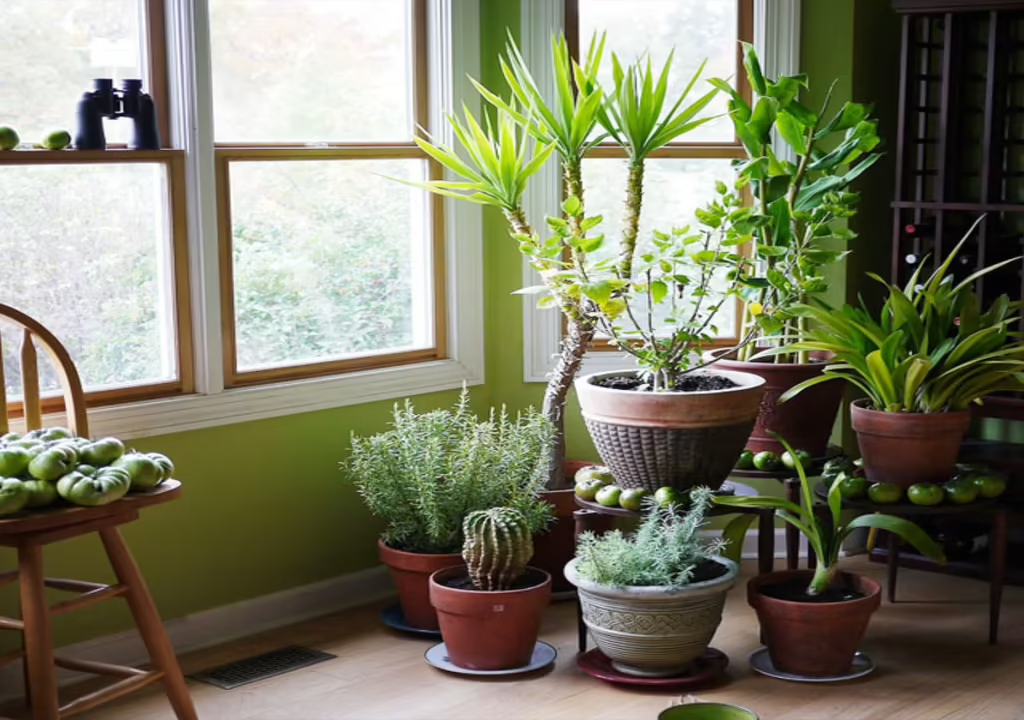In today’s fast-paced, stressful world, getting quality sleep is more important than ever. While many people rely on blackout curtains, white noise machines, or aromatherapy to improve their rest, one of the most natural and overlooked solutions is adding high oxygen-producing plants to your bedroom.
Certain indoor plants don’t just beautify your space — they actively purify the air and release oxygen at night, improving the quality of your breathing, reducing stress, and promoting deeper, more restful sleep. In this guide, you’ll learn which high oxygen plants to grow, how to care for them, and tips to create a healthier, greener sleeping space.
Why High Oxygen Plants Improve Sleep

Most plants photosynthesize by absorbing carbon dioxide and releasing oxygen during the day. However, some unique species, known as CAM (Crassulacean Acid Metabolism) plants, continue producing oxygen at night. When placed in your bedroom, these plants can:
- Increase oxygen levels
- Filter harmful airborne toxins (like formaldehyde, benzene, and trichloroethylene)
- Improve humidity
- Reduce stress and anxiety
- Create a serene, relaxing environment
These natural benefits lead to better breathing, deeper sleep, and improved overall well-being.
Top High Oxygen Plants to Grow for Better Sleep
Let’s start by exploring some of the best plants that release oxygen at night and are ideal for bedrooms.
1. Snake Plant (Sansevieria)
- One of the most popular oxygen-producing houseplants.
- Releases oxygen at night while removing toxins like benzene and formaldehyde.
- Extremely low-maintenance and drought-tolerant.
Care Tip:
Thrives in low to bright indirect light. Water every 2–4 weeks, letting soil dry completely.
2. Areca Palm
- A lush, elegant palm that acts as a natural humidifier.
- Continuously produces oxygen while filtering indoor air.
- Adds tropical vibes to your bedroom.
Care Tip:
Prefers bright, indirect light and consistently moist (but not soggy) soil.
3. Aloe Vera
- Known for its medicinal gel, aloe also purifies the air and emits oxygen at night.
- Absorbs harmful chemicals from household products.
Care Tip:
Needs bright, indirect light and infrequent watering. Let soil dry out between waterings.
4. Peace Lily
- Beautiful, flowering plant that removes toxins while releasing oxygen.
- Increases room humidity, which soothes dry skin and respiratory issues.
Care Tip:
Prefers low to medium indirect light and moist soil. Keep away from direct sunlight.
5. Tulsi (Holy Basil)

- Sacred in Ayurveda for its healing properties and air-purifying benefits.
- Releases oxygen continuously while absorbing carbon dioxide and harmful gases.
Care Tip:
Needs 4–6 hours of sunlight daily and moderately moist soil.
6. Gerbera Daisy
- Produces high oxygen levels at night and eliminates benzene.
- Bright, cheerful blooms make them perfect for bedside tables.
Care Tip:
Needs bright, indirect sunlight and evenly moist, well-draining soil.
How to Grow High Oxygen Plants Successfully

Now that you know which plants to grow, here’s how to care for them effectively so they thrive indoors.
Light Requirements
Most oxygen-producing plants thrive in bright, indirect sunlight.
- Place near east- or west-facing windows.
- Avoid placing directly in harsh afternoon sun, which can scorch leaves.
- For low-light plants (like snake plants or peace lilies), corners with filtered light or shaded spots work fine.
Pro Tip:
Rotate plants every 2 weeks to encourage even growth.
Watering Guidelines
Golden rule: Avoid overwatering — it’s the quickest way to harm indoor plants.
- Check soil moisture by inserting a finger 1–2 inches deep.
- Water only when the top layer feels dry.
- Reduce watering in winter as plants grow slower.
Signs of overwatering:
Yellow, mushy leaves, root rot, and foul-smelling soil.
Signs of underwatering:
Crisp, curling, or drooping leaves.
Pro Tip:
Use room-temperature, chlorine-free water when possible.
Ideal Soil Mix
Use a well-draining, loose potting mix for your high oxygen plants to prevent soggy roots.
Best options:
- Cactus or succulent mix for snake plants and aloe vera.
- Peat moss-based mix for palms and peace lilies.
- Add perlite or sand to improve drainage.
Pro Tip:
Check the pot’s drainage holes to avoid water accumulation at the bottom.
Temperature and Humidity
Most indoor oxygen plants prefer:
- Temperature: 60°F to 85°F (15°C to 29°C)
- Humidity: Moderate to high (especially for peace lilies and areca palms)
Pro Tip:
Use a small humidifier in dry bedrooms or mist plants occasionally in summer.
Fertilizing Tips
Feed your plants during their active growing season (spring and summer):
- Use a balanced liquid houseplant fertilizer diluted to half strength.
- Fertilize once a month for flowering and fast-growing plants.
- Reduce or stop feeding during fall and winter.
Arranging Your Bedroom Plant Space

For maximum impact:
- Place plants on your bedside table, windowsill, or dresser.
- Avoid cluttering your sleeping area — 2–3 well-chosen plants can transform air quality.
- Use attractive pots to complement your bedroom decor.
- Keep taller plants (like areca palms) near corners or windows.
Benefits Beyond Better Sleep
In addition to promoting restful sleep, high oxygen plants:
- Enhance concentration and mood
- Relieve stress and anxiety
- Balance indoor humidity
- Purify air from harmful chemicals and allergens
- Add natural beauty and a serene vibe to any space
Bonus:
Some studies, including NASA’s famous Clean Air Study, found that plants like snake plants, peace lilies, and areca palms significantly reduce indoor air pollutants.
Common Mistakes to Avoid

- Overwatering:
Let soil dry between waterings — soggy soil causes root rot. - Placing in dark corners:
Even low-light plants need indirect light for healthy photosynthesis. - Using poorly draining soil:
Always use loose, well-draining potting mixes. - Ignoring humidity needs:
Dry air harms tropical plants. Mist regularly or use a humidifier. - Too many plants in a small space:
Overcrowding can block airflow and light, leading to pest problems.
Final Thoughts
Growing high oxygen plants in your bedroom is one of the simplest, most natural ways to improve your sleep quality and overall well-being. From low-maintenance snake plants to lush areca palms, these beautiful plants not only freshen the air but create a calming, restorative atmosphere for restful nights.
By following this guide’s light, soil, and watering tips, even beginners can successfully cultivate a small, oxygen-boosting bedroom jungle that works silently while you sleep.
So why wait? Bring home a few of these air-purifying champions, set them by your bed, and start enjoying better, healthier sleep tonight!




Leave A Comment